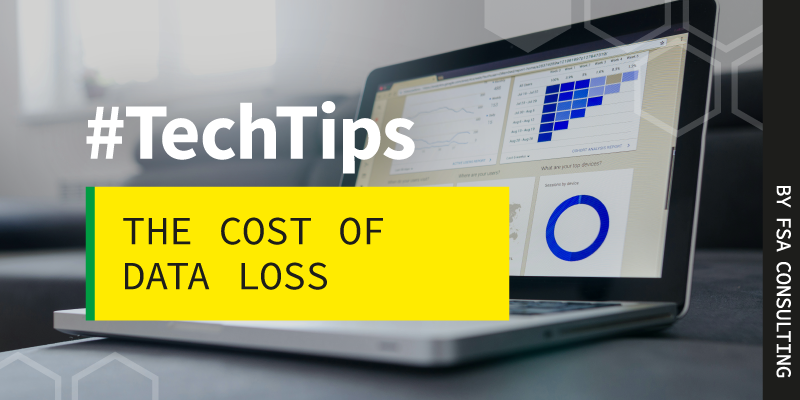Data is a cornerstone across industries, from professional firms to busy retail storefronts. Your company’s data is invaluable, whether it’s your client’s financial details or your customer’s preferred pizza toppings. The thought of losing this critical information can feel like a chilling nightmare and keep you up at night. Hope alone doesn’t shield you against this threat. You need to confront potential issues head-on by understanding, preventing, and effectively addressing data loss.
Types of Data Loss
We often emphasize the importance of safeguarding your IT infrastructure against cyber threats. Malware, cyber-attacks, and other nefarious activities get a lot of attention and headlines. And indeed, those are genuine threats. The truth is that some of the most significant dangers lurk within your daily operations. Files can be corrupted, hardware can fail, and data can be deleted accidentally. So, it is essential to remember all of these opportunities for data loss when fortifying your data security.
Impact of Data Loss
Data loss impacts nearly every aspect of your business. Financially, the toll can be substantial, with the loss or compromise of just a hundred records costing companies anywhere between $18,102 and $35,730. A data center outage can cost nearly $8,000 a minute. That hits the bottom line but does not factor in the damage to your business reputation or, in extreme cases, legal consequences.
Financial Costs
In the aftermath of data loss, immediate costs stack up for data recovery services and potentially repairing or replacing damaged IT infrastructure. Yet, indirect costs, including employee downtime, reduced productivity, and the erosion of customer trust, can compound the impact. In severe instances, regulatory fines and legal fees might further add to your financial burden.
Factors Affecting Recovery
The recovery and impact on your business depends on several factors. First, we must look at the type of data loss. Was this a malicious attack on your business, or is someone looking for ransom, or an inadvertent error? Equally critical is the volume of data to be recovered and how quickly you need it to resume normal business operations.
Next, we must look at the ability for recovery itself. What data backup solutions are in place, and can they be accessed quickly? What is the quality of your backups? Can you use them immediately, or must you review and clean them up? Ideally, recovery is simple, but challenges may arise.
How to Bounce Back from Data Loss
Despite the bleak scenario painted, the specter of data loss need not keep you up at night. While you can never guarantee that you’ll never lose any data, if you implement and practice some best practices, you can rest easy knowing you can recover.
Create regular data backups
And, this is not a “set it and forget it” thing. Review your backups regularly to ensure you have all the information you need. If there is a change to one of your systems or databases, you want to ensure that any changes or new information is also being backed up.
Implement robust security measures
Review them routinely to keep updated with the latest threats and new security standards. But security can never be completely automated. Ongoing employee training and awareness programs will keep data security in mind and hopefully reduce the potential for accidents.
Know who to call
Know who to call if the worst happens. Preemptively connect with data recovery services and research recovery software before something goes wrong. A proactive plan ensures you’re not trying to find the right solution during a crisis.
When was the last time you evaluated your data security and recovery plans? Schedule a consultation with FSA Consulting today to strengthen your defenses against data loss. Don’t let nightmares become a reality.

